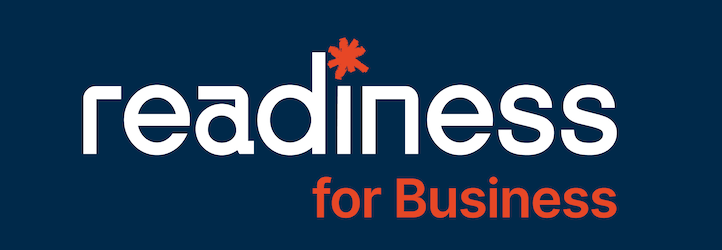By Professor Jane Burns
Mental health stigma hurts. Often the discrimination a person encounters from work colleagues or from their manager may be worse than the condition itself. Clear evidence suggests the consequences of stigma in a workplace has a detrimental impact on the health and success of both employees and the bottom line.
Almost one-third of a person’s life is spent at work. Whether you’re a leader, HR manager or employee, having a negative view or attitude towards people struggling with their mental health is discrimination. There’s simply no place for it in your workplace – or, frankly in our society.
Every year, the Superfriend survey of over 10,000 Australians reports that, despite best efforts to reduce stigma, nearly one in 10 people have experienced stigma at work.
To help, SANE Australia, last year, launched the National Stigma Report Card, which strongly reinforced the importance of organisations and individuals continuing to collaborate to build a stigma-free community.
Beyond Blue, Australia’s national depression initiative, with a mandate to stamp out stigma, commenced its work in 2000.
And, WorkSafe Victoria’s WorkWell Program introduced a suite of tools, resources, funding and networking opportunities to help workplace leaders prevent mental injury.
Australian businesses – from large corporations and small enterprises – have an opportunity to build on this foundation of knowledge and translate it to behaviour change. Business leaders are voting with their feet and driving greater actions to support a well workplace, but we need to do more than just raise awareness and reduce stigma.
Firstly, what is mental health stigma?
Stigma is usually a result of ignorance, misunderstanding or negative attitudes towards mental health conditions. Over my 20 plus years of working in suicide prevention, I have heard every opinion about mental health, but there’s a big difference between fact and myth. Fact – mental illness is real – just like cancer, heart disease and diabetes are real illnesses.
Perhaps you have feared losing your job or disrupting your career by speaking out. Maybe you were worried about being judged or seen as incompetent. There might have even been feelings of generational, cultural or gendered stigma.
If this has happened to you, I am deeply sorry to hear it. As the SANE survey and Superfriend research clearly highlights, you are not alone.
If you are a business leader or HR manager and you’re worried mental health stigma exists in your workplace, it’s time to stamp it out.
Did you know there are four types of stigma?
Based on my own research across a variety of workplaces, every mental health stigma experience is different. Research, however, showcases four types of stigma that impact the workplace:
- Personal stigma: A person’s stigmatising beliefs and attitudes about other people.
- Perceived stigma: A person’s beliefs about the negative and stigmatising views that other people hold.
- Self-stigma: The stigmatising view that someone holds about themselves.
- Structural stigma: Where the policies and cultural norms of a workplace restrict the opportunities, resources and wellbeing of those struggling with their mental health.
So, what impact can mental health stigma have on your workplace?
The impact of mental health stigma varies and can be felt at all stages of the employment cycle – during recruitment, when returning to work from maternity or personal leave, when it comes to promotional opportunities or even when offered or accepting a redundancy.
According to ComCare, the national work health and safety and workers’ compensation authority, stigma in the workplace can:
- Lead to discriminatory behaviour, including harassment;
- Affect people’s attitudes and beliefs towards those struggling with their mental health (including themselves); and
- Prevent those struggling with their mental health from feeling safe to disclose and seek support from their employer and others around them.
The worst part is, when mental health stigma exists in your workplace, it makes recovery from mental illness harder, it promotes discrimination and causes isolation.
How can business leaders break down mental health stigma at work?
With so much information available about stamping out stigma at work, it can be extremely difficult for leaders to know where and how to even begin. At the same time, employees struggle and often talk about being overwhelmed by the information available to them.
RU OK? Day, Mental Health Month and mental health literacy training are an excellent foundation to reduce stigma, but to truly create a psychologically safe workplace leaders need to focus on stigma reduction. It’s about building in ‘easy to action’, everyday activities that focus on prevention and the promotion of good mental health.
We need more than just talk, and workplaces need support to take action. Solutions like Readiness, which provides a proactive digital wellbeing platform for businesses to track the mental health and wellbeing of their employees, are vital initiatives in the journey to break down stigma within the workplace. I joined the Readiness team for a few reasons:
- Readiness takes the science of ‘performance’ and has built a simple 60 second survey validated by Swinburne University’s Centre for Mental Health, that captures the pulse check of an organisation’s health every week.
- The Readiness platform is built around partnerships and is interoperable, allowing evidence-based content to be curated and collated, and then personalised to each employee.
- Peer support is a critical component of Readiness’ approach, and allows employees to nominate a ‘buddy’ – available for a coffee, a vent or a check-in when needed.
- Readiness provides a warm handover to clinical care, with the platform able to monitor early risk factors such as stress or poor sleep.
Let’s start by normalising the conversation and then focus on understanding how to take action, when to take action, and what data is available to help you take action – in real time and before problems become entrenched.
7 strategies leaders can adopt to help create a mentally healthy workplace
- Prioritise your own education and the education of your employees with key content that emphasises prevention and early help seeking before problems become a challenge
- Talk about your own lived experiences to help normalise and encourage open conversations about mental health
- Create a culture of inclusiveness and diversity
- Minimise workplace mental health risks such as stress
- Develop mental health policies or a Workplace Wellbeing action plan
- Schedule regular check-ins with staff and establish a buddy system
- Take this pledge for better workplace mental health
7 strategies individuals can use to break down mental health stigma
- Check-in with others around you
- Encourage others to get help
- Get to know people with lived experiences so you see them for themselves and not their illness
- Don’t judge or discriminate
- Use the right language
- Speak up if you hear people making stereotypical or inaccurate comments about mental health
- Share your own experiences of mental illness and/or support others who do speak up
By taking tangible and compassionate steps towards reducing mental health stigma, you will help build the momentum needed to reform Australian businesses so that we all prioritise having a well workplace. I believe it’s well worth the effort.
Professor Jane Burns is a mental health and suicide prevention expert and a strategic advisor for Readiness. She is also an international keynote speaker and winner of the Westpac and Financial Review 100 Women of Influence.
For more information about the Readiness complete wellbeing platform, click here.

